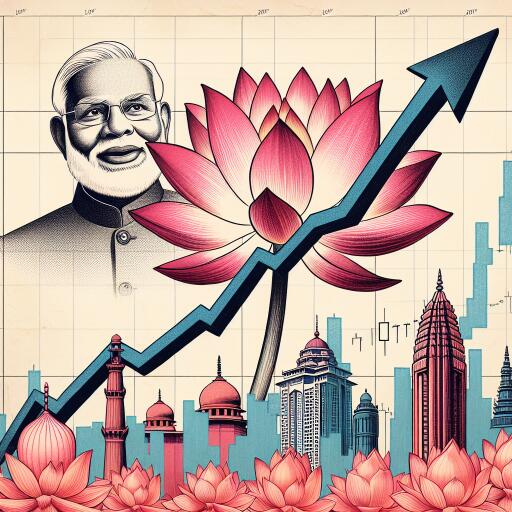Setting the Stage for India’s Economic Leap by 2047
In an era defined by rapid technological advancement and shifting global dynamics, India stands on the precipice of a transformative journey. At the heart of this transformation is the vision of India evolving into ‘Viksit Bharat’, a developed nation by 2047. Leading this ambitious endeavor is none other than Prime Minister Narendra Modi, whose envisioned third term is seen as a crucial phase in India’s march towards becoming one of the top three economies globally.
A Blueprint for Next-Generation Reforms
The Modi-led government has charted a course of systemic reforms since its inception in 2014. The focus is not just on immediate gains but on laying a robust foundation for the future—a digital infrastructure that empowers, an economy that inclusively grows, and a society that thrives on innovation and knowledge.
Union Finance Minister Nirmala Sitharaman, speaking at the FICCI Conclave on Viksit Bharat 2047, underscored the government’s commitment to these reforms. According to Sitharaman, the journey towards a developed India is not just a governmental effort but a national mission that requires the collective energy and innovation of India Inc. It is about shaping an India that future generations will inherit with pride, an India where opportunities flourish, and a nation that resonates with the aspirations of its youth.
Emphasizing Digital Infrastructure and AI
Central to these reforms is the emphasis on creating a resilient digital infrastructure. Sitharaman highlighted that the path to becoming one of the world’s leading economies is intertwined with advancements in technology. “No country can achieve developmental goals without digital infrastructure,” she affirmed. The focus areas include cutting-edge realms like Space and Artificial Intelligence (AI), where India is poised to become a global hub, even setting up centres of excellence to foster innovation and development.
Beyond Agriculture: Warehousing, Logistics, and Tourism
The transformational agenda extends beyond digital realms. Sitharaman touched upon the need for policy support, investment, and collaboration across sectors like warehousing, logistics, and agriculture. However, the vision sees the potential of India’s rich cultural tapestry and natural beauty as underleveraged assets. With the right legislative and infrastructural push, sectors like tourism could see a significant upswing, contributing to India’s economic ascent and drawing parallels with global tourist hotspots.
Renewable Energy: A Pathway to Sustainability
The green economy forms another cornerstone of India’s developmental strategy. Sitharaman’s discourse elaborated on the immense potential within the renewable energy sector—not just in solar and wind, but extending commitments to hydroelectric power. The recent surge in investments in Green Hydrogen & Green Ammonia signifies India’s resolve to forge a sustainable future. This is complemented by an increased capital expenditure post-Covid, underscoring the government’s commitment to bolstering the sector and, by extension, fostering an environment ripe for global business and innovation.
Envisioning the Future
As Sitharaman aptly highlighted, it’s a pivotal moment for Indian industry to seize the opportunities laid out by these far-reaching reforms. The convergence of policy support, innovative capabilities, and a commitment to sustainability presents an unmatched trajectory for growth. The vision of Viksit Bharat by 2047 is not just an emblematic goal but a clarion call for collective endeavor—a blueprint for an India that prides itself on being a global economic powerhouse while staying true to its roots and embracing a sustainable and inclusive future.
With these initiatives and a spirit of unyielded determination, India is well on its way to scripting a new chapter in its saga of growth and development. A chapter where each citizen, empowered by the opportunities of today, contributes to the realization of the dream called Viksit Bharat. The journey ahead is long and fraught with challenges, but under the guiding light of strategic reforms and visionary leadership, the destination seems within grasp.
